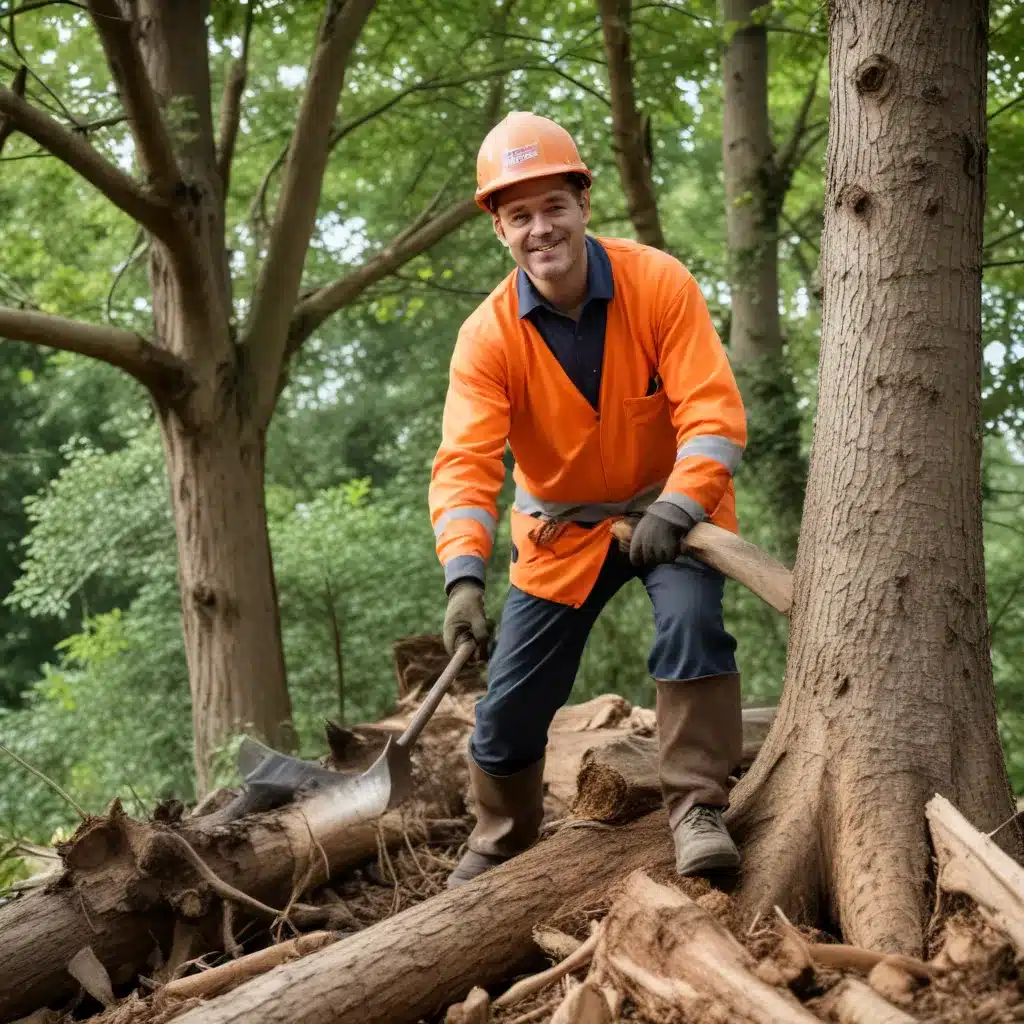
Tree Removal and Community Engagement: Involving Stakeholders in the Decision-Making Process for Better Outcomes and Shared Ownership
Tree removal is a complex and often contentious issue that requires careful consideration of a variety of factors. As a tree care specialist at TriCounty Tree Care, I understand the importance of balancing the needs of the community, the environment, and regulatory frameworks when making decisions about tree removal. One key aspect of this process is engaging the community in a meaningful and collaborative way.
Reasons for Tree Removal
There are several legitimate reasons for removing a tree, such as public safety concerns, disease or infestation, or infrastructure conflicts. However, the decision to remove a tree should not be taken lightly, as trees provide numerous ecological advantages, including air purification, stormwater management, and habitat provision.
Environmental Considerations
When evaluating the need for tree removal, it’s crucial to assess the environmental impact, including the effects on local wildlife, the potential for soil erosion, and the long-term consequences for the urban forest. Removing a tree can have cascading effects on the local ecosystem, and these implications must be carefully weighed.
Regulatory Frameworks
Tree removal is often subject to local ordinances and permitting requirements, which may vary depending on the location and the species of tree. In some cases, endangered species protections or other regulatory frameworks may come into play, necessitating a thorough understanding of the applicable laws and regulations.
Community Engagement
Engaging the community in the tree removal decision-making process is essential for achieving better outcomes and promoting shared ownership. This involves identifying key stakeholders, implementing effective communication strategies, and fostering a collaborative decision-making approach.
Stakeholder Identification
The first step in community engagement is to identify the relevant stakeholders, which may include residents, community organizations, environmental groups, local government officials, and industry professionals. Each of these stakeholders brings a unique perspective and set of concerns that must be considered.
Communication Strategies
Effective communication is crucial for engaging the community. This may involve public meetings, informational materials, and online platforms that allow for open dialogue and the exchange of ideas. It’s essential to ensure that communication is culturally and linguistically appropriate to reach all members of the community.
Collaborative Decision-Making
By involving the community in the decision-making process, shared ownership and collective responsibility can be cultivated. This may involve facilitated discussions, consensus-building exercises, and joint evaluation of alternatives, all with the goal of reaching a decision that best serves the interests of the community and the environment.
Shared Ownership
Fostering a sense of shared ownership and responsibility is a key aspect of successful community engagement in tree removal projects. This involves empowering community members, cultivating a sense of stewardship, and implementing sustainable maintenance practices.
Empowering Community Participation
By actively involving community members in the decision-making process, you can empower them to take an active role in shaping the outcome. This may include soliciting feedback, incorporating local knowledge, and providing opportunities for hands-on involvement in the project.
Cultivating a Sense of Responsibility
Encouraging a sense of responsibility and environmental stewardship among community members can help ensure the long-term success of tree removal and replanting efforts. This may involve educational initiatives, volunteer opportunities, and recognition of community champions.
Sustainable Maintenance Practices
Implementing sustainable maintenance practices, such as regular inspections, proactive care, and strategic replanting, can help ensure the long-term health and resilience of the urban forest. By involving the community in these ongoing efforts, a sense of shared ownership and commitment can be fostered.
Decision-Making Process
The decision-making process for tree removal should be transparent, inclusive, and guided by the input of stakeholders. This involves gathering input from the community, evaluating alternatives, and making decisions in a way that is accountable to the public.
Gathering Input from Stakeholders
By soliciting input from a diverse range of stakeholders, you can gain a better understanding of the community’s needs, concerns, and priorities. This may involve public forums, surveys, and one-on-one conversations with key community members.
Evaluating Alternatives
When considering tree removal, it’s important to evaluate a range of alternatives, including tree preservation, relocation, and replacement. This process should be guided by scientific data, environmental considerations, and community input.
Transparent Decision-Making
The final decision-making process should be transparent and accountable to the community. This may involve publicly sharing the rationale for the decision, documenting the decision-making process, and providing opportunities for ongoing feedback and oversight.
Environmental Impact
Assessing and mitigating the environmental impact of tree removal is a crucial aspect of the decision-making process. This involves evaluating the ecological consequences, implementing strategies to minimize adverse effects, and promoting habitat restoration.
Assessing Ecological Consequences
Before removing a tree, it’s essential to thoroughly assess the ecological consequences, including the impact on local wildlife, the potential for soil erosion, and the effects on the urban forest ecosystem.
Mitigating Adverse Effects
If tree removal is deemed necessary, it’s crucial to implement strategies to mitigate the adverse effects, such as careful removal techniques, stump grinding, and soil remediation.
Promoting Habitat Restoration
In addition to mitigating the immediate impacts of tree removal, it’s important to consider long-term habitat restoration efforts, such as replanting with native species and creating wildlife corridors.
Conclusion
Engaging the community in the tree removal decision-making process is essential for achieving better outcomes and promoting shared ownership. By identifying key stakeholders, implementing effective communication strategies, and fostering collaborative decision-making, you can ensure that tree removal projects are guided by the needs and priorities of the community, while also upholding environmental considerations and regulatory frameworks. TriCounty Tree Care is committed to working with communities to develop sustainable, equitable, and ecologically-sound solutions for tree management.


